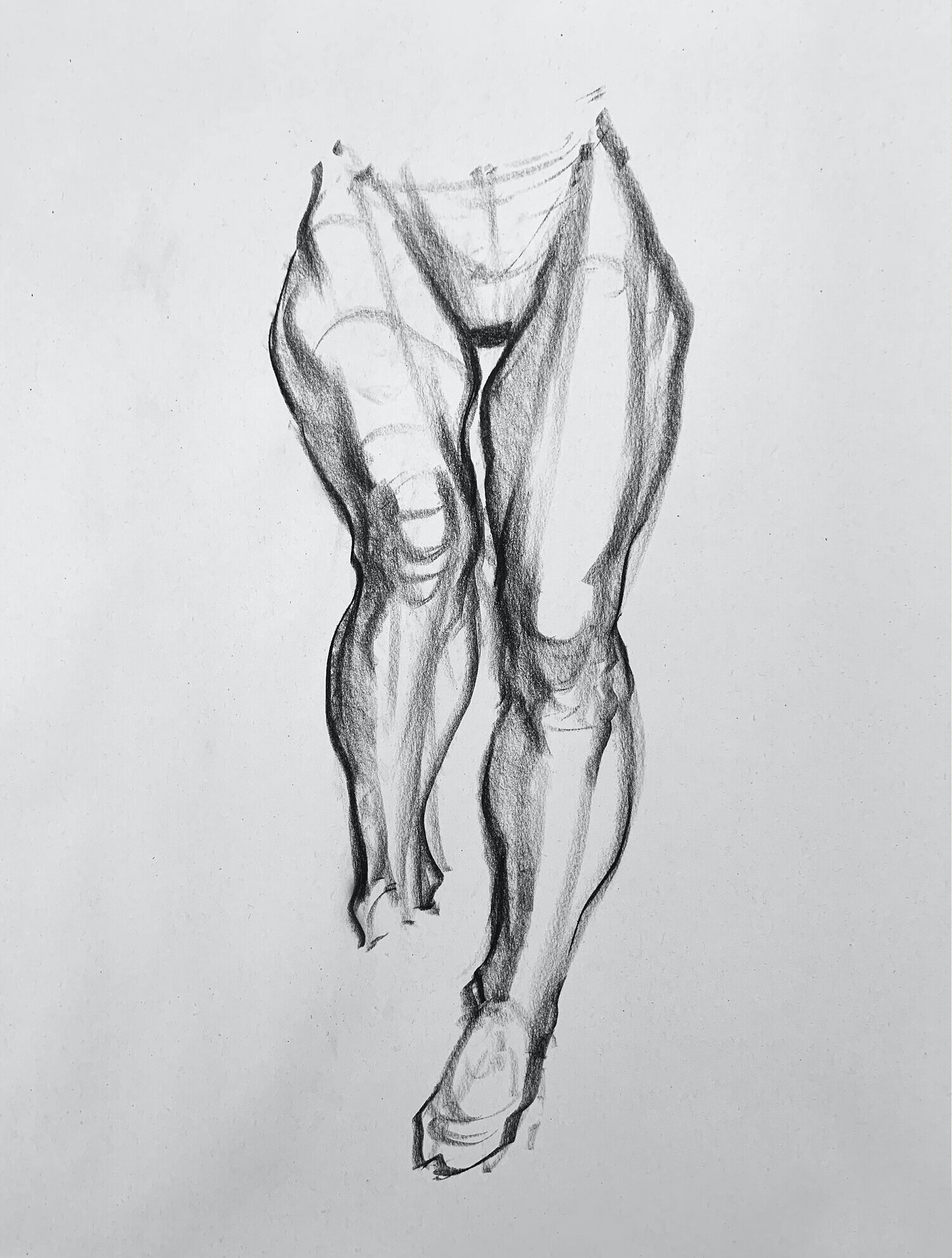Sometimes when drawing time is limited I’ll do a quick exercise from memory, maybe 10-20 mins in length. I’ll just work through an idea, in this case a leg study but it could be anything really. It’s a great way to gauge how well you know a subject and helps keep the tools sharp. It feels similar and I think has similar rewards to doing scales or exercises on a musical instrument.
Squint and simplify!
I'm always looking for opportunities to simplify the tonal structures and relationships between light and shadow. If we try to capture everything we see, we inevitably end up with too much noise. Simplicity is usually the key. Squinting is a great way to get rid of a lot of the noise and to find the major transitions, just remember to stop squinting before you start drawing!
FIGURE DRAWING & ANATOMY WORKSHOP, 18TH - 20TH NOVEMBER, FLORENCE.
Life Drawing bootcamp starts tomorrow!
This three week bootcamp will help bring your Life Drawing to the next level. Over the 3 weeks we'll look at the different stages for developing solid drawing habits through a variety of techniques, lectures and demos whilst drawing from the model. We’ll discuss design language, transitional forms, foreshortening and a variety of topics that will help develop our drawing.
Anatomy: An Introduction
Some thoughts on Anatomy and why it matters
So many years ago when I started studying figure drawing I had no idea I'd get so immersed in Anatomy! Artistic Anatomy has been an essential component in my development as a Figurative Artist. But understanding Anatomy alone is not enough, it's how we apply those ideas that matters.
So why do we need to learn Anatomy?
Back Anatomy study from écorché. 2018
Well, if we understand what lies beneath the surface we can make some informed decisions on how to represent what we see on the surface. We use anatomical landmarks to help understand and make sense of what it is we are looking at. In turn, we can then make creative decisions on how we want to represent those ideas. When we start to learn Anatomy it can be quite intimidating but it's not essential to know all the names of all the muscles. Knowing some of the major groups and how they relate to each other will go a long way and over time your knowledge will increase and a certain familiarity will start to take hold.
If we break it down into sections, we can make it manageable and develop our understanding in an incremental way without having to get overwhelmed by the whole.
Get out that Anatomy book!
This is a good place to start. Open the anatomy book sitting on your shelf and have it next to you while you draw. If something that you're seeing on the figure needs clarification then you have reference easily at hand. I'll do a book list in a future post where we can look at just a few of what are probably thousands of books on the subject at this point. Another option is obviously google images, but it's a bit more chaotic.
Leg Anatomy study from écorché. 2018
Anatomical study of individual body parts is a great way to familiarise yourself with the patterns and proportions of the muscle systems. Take the torso, an arm, leg or anything that grabs your interest and copy it from the book. Most likely the names of the muscles will be next to them and this will help start to build that knowledge base.
A nice supplement to the above if you have access to one is an écorché. The écorché used for the drawings on this page is a model that sits in my studio. They're not essential by any means, but a nice additional reference.
If you can give just a few minutes a day to Anatomy you'll be amazed how much it will help. As you continue to develop your Figure Drawing you'll have that knowledge to fall back on and help inspire the next decision.
Plenty more to come about Anatomy and how we can apply that knowledge in a meaningful way in future posts!




